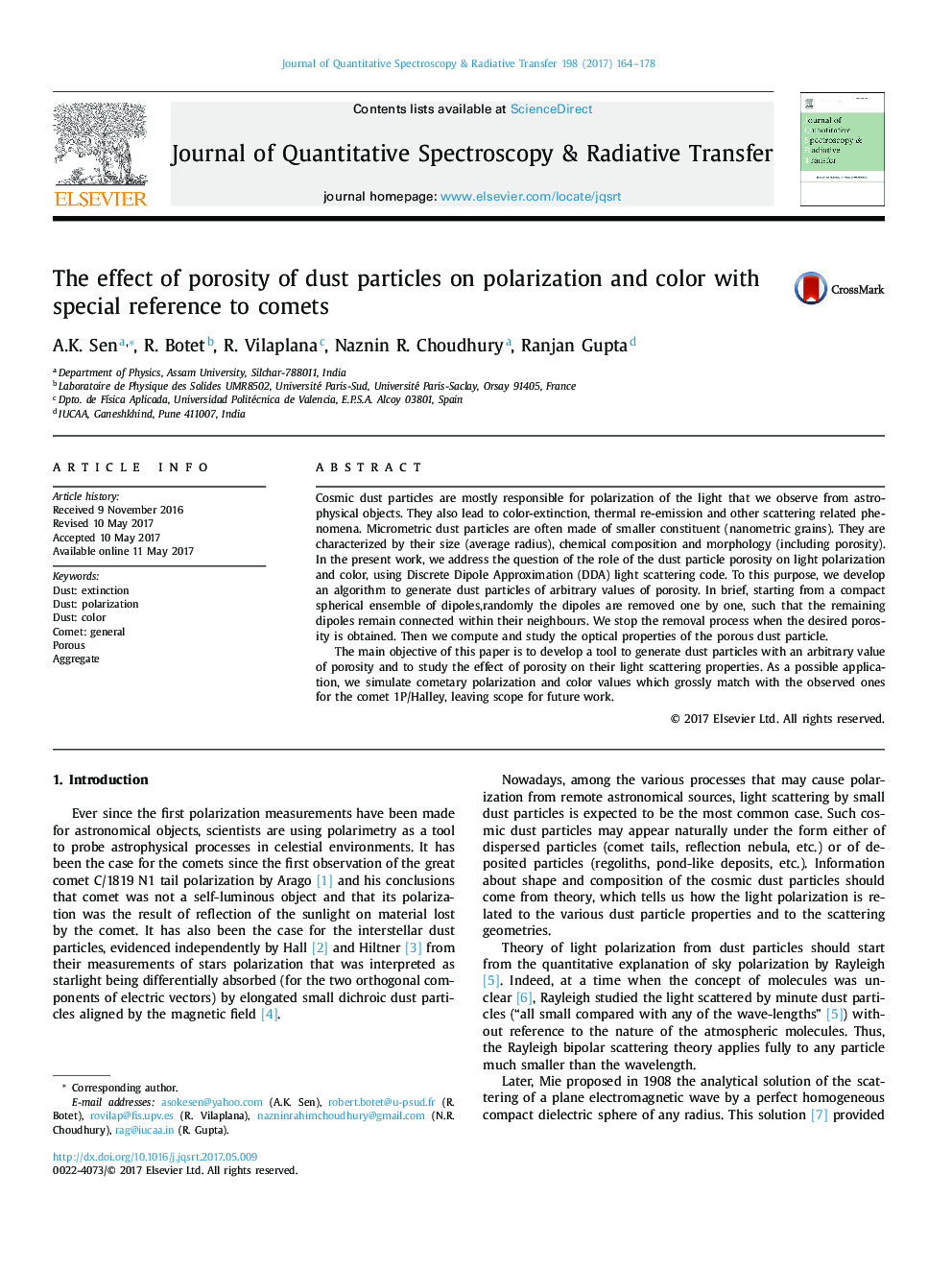| کد مقاله | کد نشریه | سال انتشار | مقاله انگلیسی | نسخه تمام متن |
|---|---|---|---|---|
| 5427110 | 1508617 | 2017 | 15 صفحه PDF | دانلود رایگان |
- A new algorithm has been developed to generate porous aggregates of any arbitrary size and porosity, by randomly removing some of the constituent dipoles and leaving rest of the dipoles connected.
- Using DDSCAT light scattering code, it was found that such dust particle aggregates can generate meaningful polarization and color values for comets.
- This method successfully generated polarization values which match grossly with the observed polarization data for comet Halley.
- On the other hand, the simulated color values do not match very well with the observed values for comet Halley.
- The results obtained from Effective Medium Theory, sometimes differ from our calculated values of polarization and color, especially at large porosities.
Cosmic dust particles are mostly responsible for polarization of the light that we observe from astrophysical objects. They also lead to color-extinction, thermal re-emission and other scattering related phenomena. Micrometric dust particles are often made of smaller constituent (nanometric grains). They are characterized by their size (average radius), chemical composition and morphology (including porosity). In the present work, we address the question of the role of the dust particle porosity on light polarization and color, using Discrete Dipole Approximation (DDA) light scattering code. To this purpose, we develop an algorithm to generate dust particles of arbitrary values of porosity. In brief, starting from a compact spherical ensemble of dipoles,randomly the dipoles are removed one by one, such that the remaining dipoles remain connected within their neighbours. We stop the removal process when the desired porosity is obtained. Then we compute and study the optical properties of the porous dust particle.The main objective of this paper is to develop a tool to generate dust particles with an arbitrary value of porosity and to study the effect of porosity on their light scattering properties. As a possible application, we simulate cometary polarization and color values which grossly match with the observed ones for the comet 1P/Halley, leaving scope for future work.
Journal: Journal of Quantitative Spectroscopy and Radiative Transfer - Volume 198, September 2017, Pages 164-178
